How to Evaluate Marijuana Quality and Potency
Here’s what to look for - and look out for - to get the best (and strongest) weed for your money.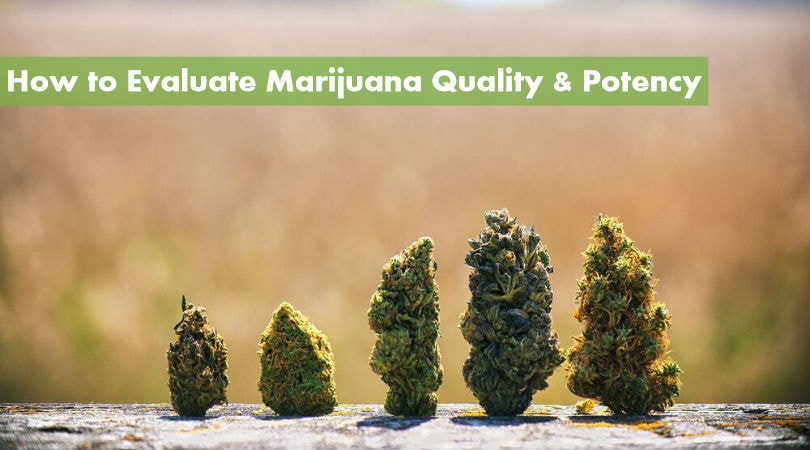 There is a world of difference between high-quality cannabis and garbage weed that you’d be better off skipping entirely. How marijuana is grown, harvested, handled, and stored has the power to make a huge difference in its potency and overall quality.
There is a world of difference between high-quality cannabis and garbage weed that you’d be better off skipping entirely. How marijuana is grown, harvested, handled, and stored has the power to make a huge difference in its potency and overall quality.
In places where recreational weed is legal, competition between dispensaries in this hot new market tends to keep quality standards high. In states where marijuana is only legal for medicinal use – or not at all – the quality of weed available (legally and on the black market) can vary considerably. Regardless of where you get your cannabis, you can use this guide to help you know what to look for – and what to avoid – to get the best and most effective weed for your money.
How to find high-quality weed
There are many factors that determine whether cannabis falls into the top-shelf category (also known as “dank,” “fire,” or “loud”) or if it’s just low-grade “schwag,” “brick weed,” or “dirt weed.” From stickiness to scent, here’s how to spot the best marijuana:
Buy from dispensaries whenever possible
Buying only certified tested weed from reputable dispensaries gives you the best odds of getting a high-quality product. Buying from private “dealers” always carries a degree of risk – to your health as well as legally. However, even in the best dispensaries, marijuana quality can and does vary, as these shops aim to cater to customers with varying range of budgets.
Dispensaries do tend to make telling the upper crust from the low-grade stuff easy, though. The “top shelf” products will literally be on the top shelf, mid-grades on the middle shelf and the lowest shelves filled with economy weed. At a good dispensary, even the least expensive weed should still be of decent quality, but you should always go for the best weed that you reasonably can. If you’re trying out a new strain, or new dispensary, research the strain beforehand and be sure to ask the budtender what to expect (smell, taste, and “high” or other effects) so that you can be sure it all adds up when you try it.
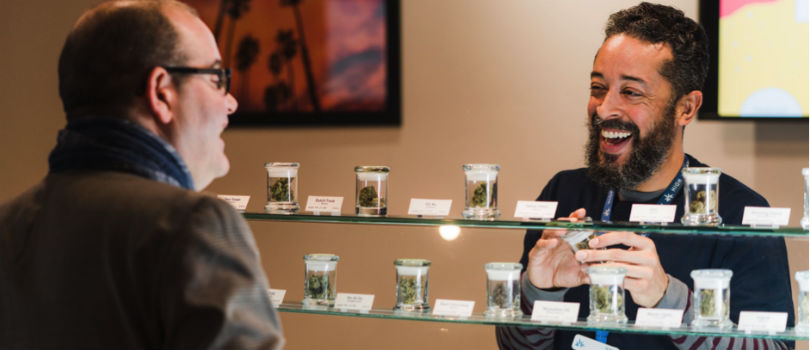
Buying from reputable dispensaries gives you the best odds of getting a high-quality product.
Hallmarks of good weed vs. bad weed
Here’s what to look for – and look out for – when you’re sizing up your next cannabis purchase.
Color
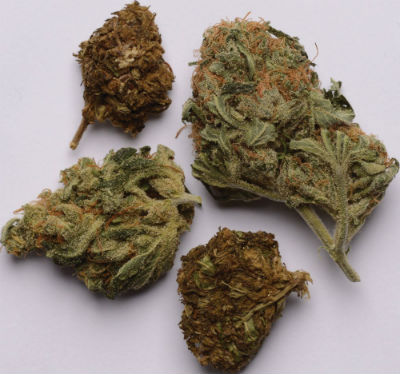
Fresh, potent weed will usually be some shade of green, or mostly green. Shades of blue, red, orange and purple may show up in good weed, too (as long as they aren’t patches of mold!), but weed should never be brown. Brown weed is a sure sign of oxidization and the resulting breakdown of cannabinoids, terpenes, and other important chemical compounds. As cannabis ages, and particularly as it’s exposed to oxygen, THC (tetrahydrocannabinol) breaks down into a compound called cannabinol (CBN). CBN has a handful of health benefits in its own right, but unlike THC, it’s not psychoactive. If your weed has started to oxidize, you’re more likely to get sleepy than stoned. Brown weed is generally difficult to smoke, as it burns too fast and the smoke is harsher and may lead to strong bouts of coughing.
Smell
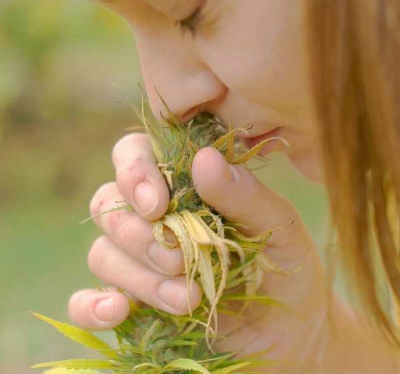
Good weed always has that pungent, unmistakable cannabis scent. Top-grade weed even boasts the nickname “loud” because its aroma is so strong and pleasant that you can’t help but notice it, even through sealed packaging! Don’t smoke any weed that smells like grass or hay, has little aroma at all, or smells like dampness or mold. Cannabis with little to no aroma has likely been exposed to too much oxygen, breaking down its aromatic (and psychoactive) compounds. If marijuana smells like grass or hay, you can expect it to be of very low quality. And, of course, moldy weed is downright dangerous to smoke. If you are unable to get your marijuana from a licensed dispensary, don’t buy without smelling it first. Occasionally, cheap dealers sub out their cannabis with completely different herbs. Before you smoke it, make sure your weed passes the sniff test!
Taste
Of course, there are a myriad of flavor note combinations possible in cannabis. But whether it’s piney, cheesy, or chocolatey, good weed will taste vibrant and fresh. If you taste chemicals or metallics, there may be pesticides or other contaminants lingering in it. Foul-tasting weed can be a sign of mold or mildew growth. If you experience chest pain or any sort of unpleasant flavor, discontinue use right away. Inhaling mold and other contaminants can cause illness and do significant damage to your lungs.
Trichomes
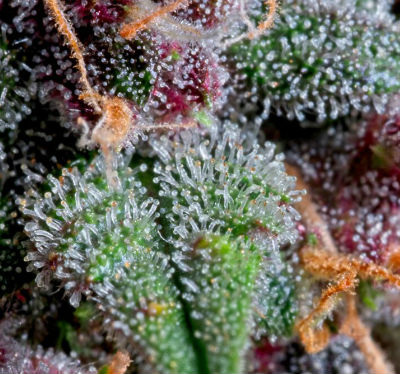
The presence of ample trichomes is another surefire way to tell how potent and well-cared-for your cannabis is. Trichomes are the facets of a white crystalline resin that coats the outside of quality buds. The thicker the trichome layer, the more potent the weed. Ideally, trichomes should be milky white, shiny, and look like fully formed crystals under a microscope or through a magnifying glass. On good-quality weed, you’ll probably be able to see some trichomes with the naked eye, but a magnifying glass can help you tell for sure.
Trichomes contain most of the terpenes and cannabinoids responsible for tasty and effective weed. If the bud is touched too much between harvest and consumption, some of the trichomes will rub off – decreasing the potency of the weed. If the weed is harvested too early, the trichomes will not be fully formed (you’ll be able to see this under magnification). If the trichomes are amber-tinged, the weed was probably harvested too late, and the THC is already breaking down into CBN. It’s not unheard of for shady black-market dealers to rub their buds with anything from soap to other drugs to make them appear high in trichomes – so stick to buying from reputable sources whenever possible.
Feel
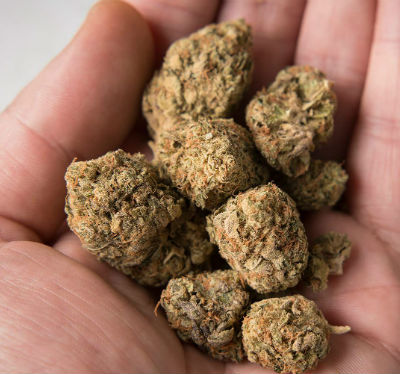
Cannabis stays fresh and pleasant to smoke when it’s not allowed to dry out or to get too damp. Dried out marijuana is harsh and irritating to smoke, burns too fast, and can cause excessive coughing. Conversely, if weed gets too wet, the likelihood of it containing mildew or mold is much higher and the flavor is usually less than desirable. Well-kept weed will easily break apart, but it doesn’t crumble to the touch.
The ideal density varies by strain, with quality indicas being quite dense, sativas being fluffier, and hybrids falling in between. The trichome resin covering your weed should feel sticky to the touch. However, you’ll want to limit how much you touch it (and use gloves, tongs, scissors, or chopsticks if you can) because any resin that gets stuck to your fingers is no longer contributing to the potency of your cannabis!
Seeds
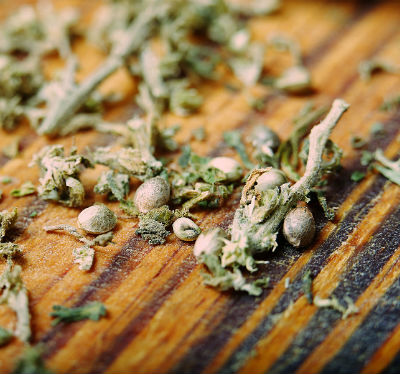
High-quality marijuana will not contain seeds, and even bottom-shelf weed should not if it comes from a reputable dispensary. Not only do seeds add weight, giving you less useable cannabis for your money, but they explode when combusted, which can not only wreck the flavor of your joint but can cause your glassware to break. Seedy weed will also be less potent since once a female cannabis plant begins to produce seeds, it will channel most of its resources to producing more seeds – and fewer toward producing psychoactive compounds.
Stems
A few stems may naturally show up in your weed, but there shouldn’t be very many. Cannabis stems really shouldn’t be smoked, and you don’t want to pay extra for stems that you’ll have to pick out. Stems and other unusable loose leaf fragments in a bag of weed are often known as “shake.” Quality weed shouldn’t contain much shake, if at all.
Orange hairs
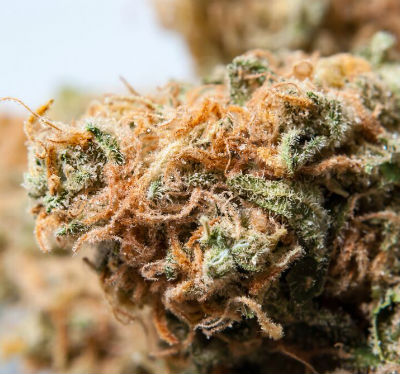
If you see orange hairs in your cannabis, that’s a good thing! These hairs are called stigmas, and they are part of the female cannabis plant’s reproductive system. Stigmas are there to collect pollen from male cannabis plants so they can grow new seeds. However, high-quality smokable weed comes only from unpollinated female plants. If the stigmas (which start out white) are orange (or yellow or red), it’s a sign that your cannabis was picked at the perfect time. If cannabis gets past its prime without being harvested, the stigmas will start to turn brown. You’ll tend to see higher numbers of stigmas in sativas.
Mold
Weed that is too wet will often contain mold. If your weed smells or tastes funky or hurts your chest to smoke, mold is a likely culprit. Inhaling mold can make you really sick, so immediately stop using any cannabis that might be contaminated. Black, gray, green, and white are the most common mold colors, but any unusual fuzzy patch on your weed is suspect no matter what color.
Trim
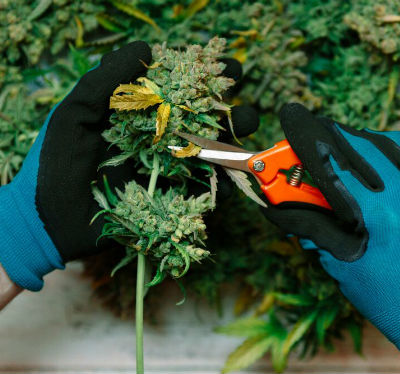
Ideally, any wispy little leaves (which aren’t coated with trichomes) should be chopped off, as excess leafy content will bring down the overall potency of your weed, Hand-trimmed cannabis is better than machine-trimmed, as it takes a human touch to trim without disturbing the trichomes too much.
If cannabis looks like it was cut haphazardly by a machine or is still covered in abundant wispy fan leaves, it’s probably not very good.
Pests
Since many cannabis grow operations avoid the use of toxic pesticides – which is generally a good thing! – there is the unfortunate possibility that bugs could end up living in your weed. If there are noticeable bugs in your weed, don’t use it! Spider mites are a common infiltrator of cannabis plants. These microscopic spiders (either brown or orange-red in color) suck the sap out of the plants and can rapidly destroy a cannabis crop. They leave behind a tell-tale smattering of white or yellow dots on the marijuana leaves. If you happen to see white hairs that look like spiderwebs in your cannabis, pluck them out and take a second look at your weed before you smoke it.
Cannabis bananas
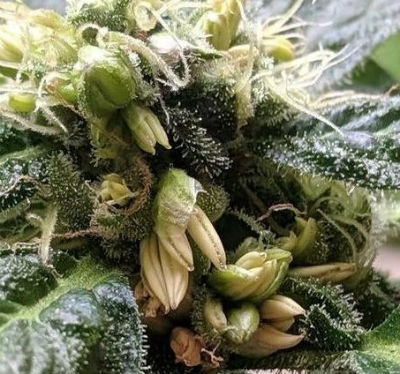
Stressful growing conditions, including too-bright or inconsistent light, too much heat or extreme swings between hot and cold, poor genetics, and lack of nutrition can cause “bananas” to form on cannabis plants. These long yellow pods resemble actual bananas, and their presence is a sure sign that a batch of cannabis is likely to be weak and full of seeds.
Cannabis bananas are stamens, the same type of pollen-makers that normally grow inside the pollen sac on male cannabis plants. Stressed-out female plants will grow their own stamens that sit directly on the outside of the plant (instead of in a sac), in a last-ditch effort to produce more seeds. But these female stamens come out long and yellow (or green), either alone or in bunches. If pollen from these bananas gets to any of your other cannabis plants, they will begin to focus their efforts on making seeds instead of cannabinoids like THC.
How to test weed for potency
Buying tested, certified weed from reputable dispensaries can give you an accurate idea of how much THC you’re getting. However, if you have to buy it elsewhere, grow your own, or simply want to see for yourself, here’s the latest in cannabis-testing technology.
Using technology to test cannabinoid levels
If you are growing your own weed, making your own edibles or concentrates, or buying outside of a licensed dispensary, it’s difficult to know how strong your weed will be. There are a growing number of cannabis labs offering “cannabinoid tests” for nearly any type of cannabis product. If you’re producing (or want to be sure before using) any kind of cannabis edibles, oils, concentrates, topical products, or regular bud, this is an option, though there is a time-lag involved in sending in a sample and waiting for results, and the cost can add up. Investing in an at-home test kit can give you a clear look at the potency of some types of cannabis in just minutes.
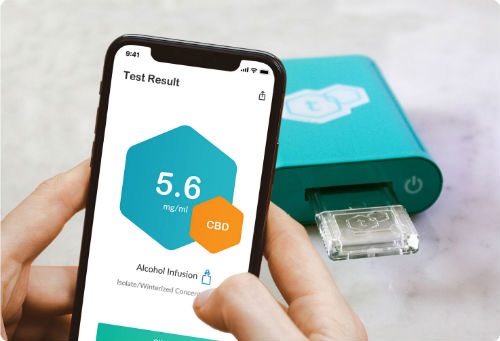
tCheck 2 Testing Device and App
Whether you run a cannabis business or you simply want to know the potency of your latest stash, one of our favorite at-home testing devices is tCheck. It’s a small, user-friendly electronic testing device (similar in size to a smartphone) with an insertable tray for your cannabis samples. In only 60 seconds, you can assess the THC and CBD levels of infused olive oil, coconut oil, butter, and clear alcohol-based cannabis tinctures. More infusible oils will be added to tCheck’s testing capability in the future. If you want to test the THCa level of flower or concentrates, you’ll need to have the expanded tCheck Expansion Kit, which includes all the supplies needed to create a testable liquid sample. These tests only take 5-6 minutes.
Once you have your potency results, you can also use tCheck’s free companion smart phone app to track your marijuana crop and see which plants are gearing up to be your star performers. If you are testing infusions for cooking or baking, the app also features a calculator to show you exactly how much of your infused oil or tincture to use in any recipe to achieve your desired potency. You don’t even have to sacrifice your original sample – it’s still useable after testing. tCheck’s accuracy is +/-15% of the reading at full scale.
Don’t ever settle for bad weed again
Now you know what to look (and smell) for, you’ll be better able to identify high-grade weed (and steer clear of the bad stuff) no matter where you buy it.
FAQ:Q: How to tell if weed is good?
A: Good quality weed will be green (never brown or moldy), coated with a sticky white crystalline resin, have a strong, pleasant smell, and be free of seeds, stems, and excess leaf material. Good weed will easily break apart, but won’t crumble to the touch.Q: What does good weed look like?
A: Good weed will be green and dense (density does vary by strain). Weed with a thick, shiny coat of a milky white crystal resin known as trichomes will be the most potent.Q: What does good weed smell like?
A: High-quality weed will have that unmistakably pungent smell that marijuana’s known for. It won’t smell damp, grassy, or weak.Q: What does bad weed look like?
A: Bad weed may either be brown, crumbly, and dried-out or damp with possible signs of mold or mildew. Low-quality weed may also contain seeds and “shake” – excess stems and leafy pieces.
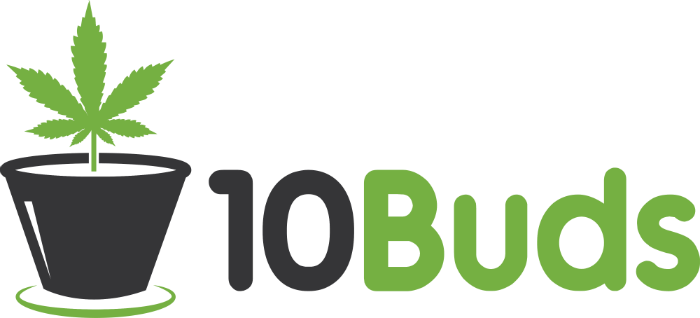
I honestly feel like all the dispensaries in California are selling low quality schwag cannabis these days especially after it passed in 2018. What do you think?